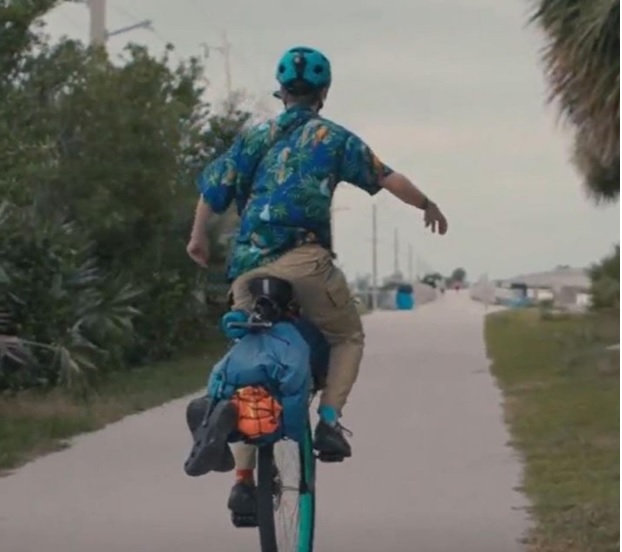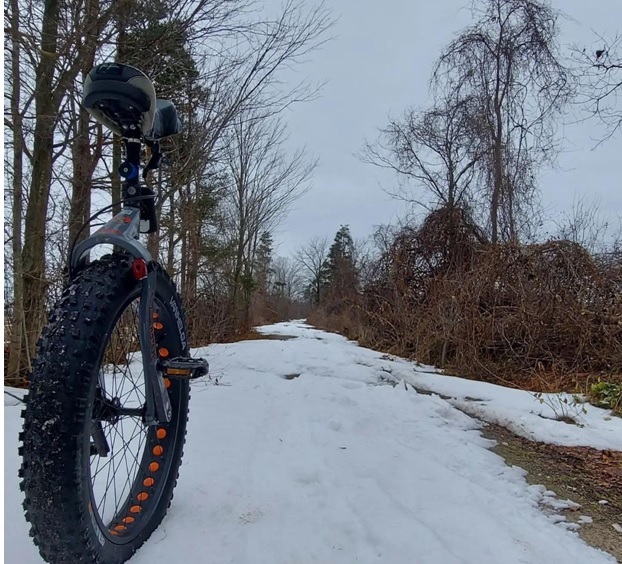What Do You Need to Take on a Long-Distance Unicycle Trip?
05/17/23
Are you getting ready to embark on a prolonged unicycle trip? Are you already planning a route?
Whether your thing is bikepacking, long-distance one wheeling, or riding a minibike (hopefully not distance riding for the latter), there are some general good maxims you should abide by.
Consider this list to contain the absolute essential gear for long-distance unicycling.
Unicycle Tools
You do not want to be caught unprepared. In fact, it is best to be prepared for your safety over taking a chance and jeopardizing your trip or even your life. Having what you need is still the best insurance. Another thing to do is make sure all your gear is maintained and serviced before you go as another preventative to not have a breakdown mid trip.
This makes unicycle specific tools necessary. What should you carry?
Well, for one, a good multitool with a set of driver bits. Either that or a set of Allen wrenches. Most good ones will fold up, fit in a pocket, and weigh only a few ounces.
Other useful tools include unicycle-specific multi-tools and pedal wrenches. You may never need them but it’s better to have and not need than need and not have.
Also, carry a pump. Our mini pump is a great, lightweight, packable option. A spoke wrench can also be useful; just make sure you get the proper size.
Having the tools is important but it is even more important to be familiar and know how to use them.
Speaking of spokes…
Spare Parts: Spokes
It might not be the first thing you think of, but spokes, like the rim wall, are the backbone to the wheel.
If you experience a spoke failure or lose a spoke, and ride the unicycle, you can cause a series of other spoke failures or permanently damage the rim.
So, carry one to two spare spokes. Please note some wheels have 2 different spoke sizes, one size for the left and another size for the right. Fortunately, they are affordable and lightweight. You can just tape them to the frame of the unicycle, too.
Please make sure you get the right size spoke and spoke wrench.
Spare Parts: Inner Tubes
Carrying a spare tire is not so easy, especially over longer distances. Tires are bulky and heavy as well.
But, tubes can be easy to pack and lighter than the tire. If you have a tire problem, you don’t need to replace the whole thing. A cut can be sewn with a heavy thread and needle, using a tire boot (duct tape, dollar bill or a piece of folded plastic) to reinforce the repair area.
If it is just the tube, swap the damaged one with a new one, and inflate it.
As for storing it, wrap the spare tube in a tool wrap and wrap it around the inside of the hub.
Bivvy/Tent
If you plan your stops around developed centers, you can AirBnB or patronize hostels for lodgings, or even stay in hotels. You’ll need to charge your electronics and wash yourself somewhere, at some point, anyway.
But, if you’re planning on staying outside the entire time, you need to think about camping essentials - which basically means you need a lightweight sleeping bag and a bivvy.
Although, you can knock out both in one go with a hammock, which is practical if you’re riding through wooded country.

Appropriate Clothing and Footwear
You don’t have room, especially on a unicycle, for infinite changes of clothing. At best, you can take one change of clothing.
So, realistically, what you should do is wear the clothing you expect to need, as dictated by the conditions. You can always shed layers, but you can’t add more if you don’t have them.
So dress appropriately and wear what you bring so you don’t need to keep it in a pack.
And bring along one spare change of clothing.
As for footwear, MTB shoes or flat-soled sneakers are ideal, especially for comfort, over the course of several days.
Waterproof Gear (That Is, a Packable Poncho)
You don’t need to dress with entirely waterproof gear because that can be prohibitively uncomfortable in hot weather, but you should be prepared for it, especially if you will be away from creature comforts for an extended period of time.
One solution is to bring a packable poncho that you can just throw over your other clothing (and gear) if it starts to rain.
These sorts of ponchos are made from thin plastic, can pack down into the space of a small Ziploc bag, and weigh less than an ounce. Also, you can get them in some places for hardly a dollar - they’re indispensable.
Food
You also need to consider food, in terms of caloric value, weight, and space.
Some guides will tell you to bring a packable stove. Frankly, that adds weight and takes up space, and for most intents and purposes, it probably isn’t necessary. Bring one if you like but we’re saying you can forgo it if you want.
Instead of bringing a stove and meals that need to be prepared on the trail, opt for shelf stable dry foods. Shelled sunflower seeds, peanuts, almonds, cashews, peanut butter, and granola. Foods like these are light, dense with nutrients, and packed to the gills with calories.
Also, they won’t take up a lot of space and won’t spoil quickly even in hot temperatures.
Water
How much water you can carry is a factor of space, weight, and how far you’ll be going between places where you can refill.
Remember, if you’re taking a 100+ mile journey, you probably cannot carry as much water as you will need for the entire trip. It’s just not possible.
Also, don’t overdo it. Large bottles and canteens are great, but when full, they are heavy and will slow you down.
At any one time, you should probably carry between a liter and a gallon of water. One way to help with weight distribution is to use a hydration-compatible backpack. That will help you carry the weight and usually the bladders hydration packs can accept are usually quite large.
Just be conscientious about how much you’re drinking (it should be between 8 and 16 ounces per hour while actually riding, although this will be affected by conditions and exertion) and make sure you refill at all reasonable opportunities.
First Aid
You carry tools to make quick fixes when there are issues with your cycle. Make sure you carry the right tools to make quick fixes if you “break.”
Gauze, bandages, and simple disinfectants like Neosporin or a little bit of hydrogen peroxide are realistically all you’ll need.
Most prefab first aid kits will have these essentials as well as some other niceties, like tweezers, scissors, moleskins, and OTC remedies, so you can either put together your own first aid kit or buy one.
Just make sure you have it.

Safety Gear
Safety gear is also a must when you take a long trip - although it really is necessary for whenever you get in the saddle.
Always wear a helmet, no matter what. Beyond that, we suggest gloves, wrist guards, knee and elbow pads, although you can also wear leg armor which will cover your entire lower leg.
Sunglasses don’t really fall under “safety gear” but they will protect your eyes and shield them from the sun and wind, so we’re including them here.
Other Necessities
Now that we’ve covered the main essentials, here are some other things you should pack for a long-distance trip.
- Identification
- Phone
- Navigation equipment/electronics
- Chargers for your electronics
- Spare cash
- A flashlight (plus batteries or a charger, whichever it needs)
- A lighter
- A bandana (has a lot of practical uses such as a wrap, to shield your face, or to carry other gear)
- Personal hygiene items
- A pen and notepad
- Spare dry sacks (you might not need them but again, better to have and not need)
- And, if you like, a book or some other sort of diversion for downtime.
Other than that, if there’s anything else you can think of that you need, bring it, but remember, each new item you add will add weight and bulk.
It’s better to stick with the essentials and keep weight and bulk to a minimum. Bring only what you need, and no more.
Parts and Tools for Unicycles, Minibikes, and Bikes: Get Ready for the Trip
Here for parts or tools for your minibike or unicycle? Get check them out here through some of the links in this article and if you can’t find what you’re looking for, contact us.
You can also get in touch with us directly if you have other questions about long-distance unicycling at 678-494-4962.

